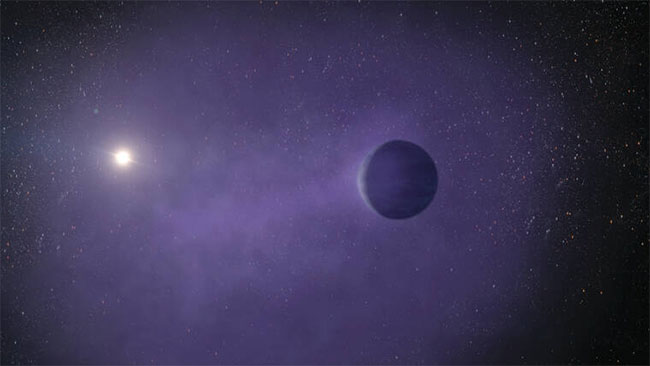The remarkable transformation process of two future super-Earths has been documented thanks to NASA/ESA’s Hubble Space Telescope and the Keck II Telescope at the W.M. Keck Observatory in Hawaii.
According to Sci-News, a research team led by Dr. Michael Zhang from the California Institute of Technology (Caltech) has sifted through Hubble data and discovered two spectacular events in the constellations of Gemini and Hydra.

Graphic depiction of a sub-Neptune transforming into a super-Earth – (Image: Adam Makarenko/W.M. Keck Observatory).
Both are sub-Neptunes, gas planets that share similar characteristics but are smaller than Neptune in our Solar System.
The first planet is HD 63433c, which orbits a G5 star named HD 63433, located 73 light-years away in the constellation of Gemini. Scientists have detected signs of hydrogen gas moving from its atmosphere to its parent star at a speed of 50 km/s.
Meanwhile, the second planet, named TOI-560b, is losing helium in a similar manner as it orbits its K4 parent star TOI-560 in the constellation Hydra.
The reason for their atmospheric loss is that the gravitational force of sub-Neptunes is generally weak, and thus when they are close to their parent stars, they cannot retain their atmospheres.
The structure of a sub-Neptune is similar to that of Neptune, consisting of a dense atmosphere surrounding a large rocky core. The severe atmospheric loss described above will eventually leave them with just their cores, potentially retaining only a thin layer of atmosphere or even losing it entirely.
At that point, they will transition from gas planets to rocky planets. Since the rocky cores of sub-Neptunes are often much larger than Earth, they will become super-Earths.
This research was recently published in the Astronomical Journal.


















































